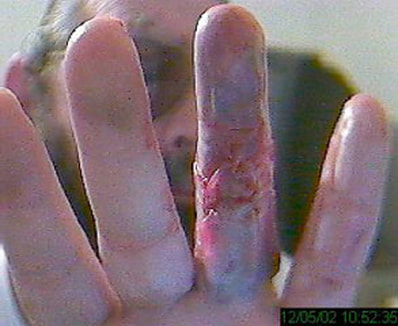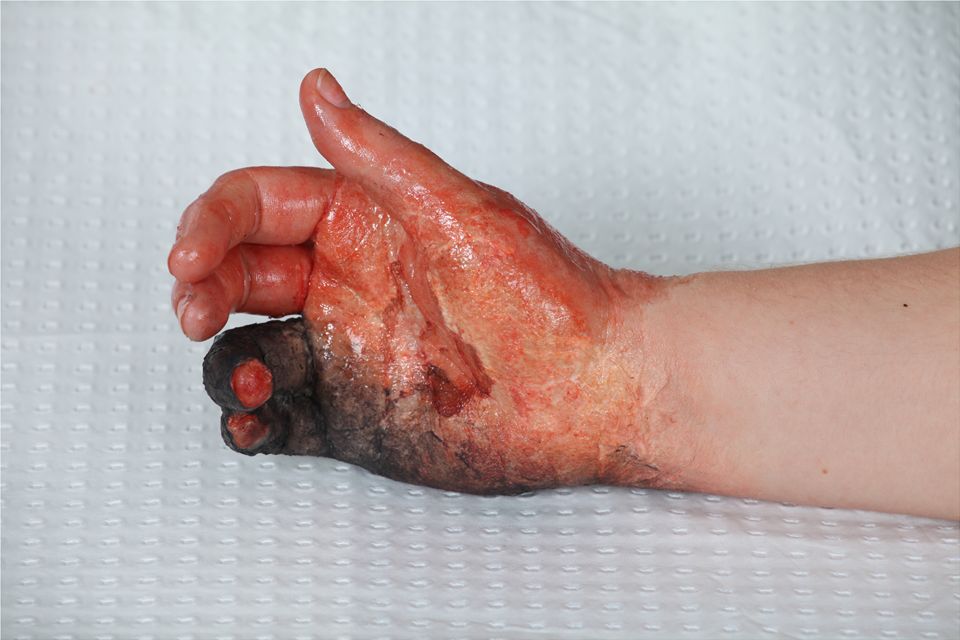Burns are damage to your body's tissues caused by heat, chemicals, electricity, sunlight, or radiation.
- 1st degree burns damage only the outer layer of skin (Red)
- 2nd degree burns damage the outer layer and the layer underneath (Blisters)
- 3rd degree burns damage or destroy the deepest layer of skin and tissues underneath (muscles, fat, & bone)
|
FOR 1st or 2nd DEGREE BURNS:
|
|
FOR 3rd DEGREE BURNS:
|
http://www.mayoclinic.org/first-aid/first-aid-burns/basics/art-20056649

